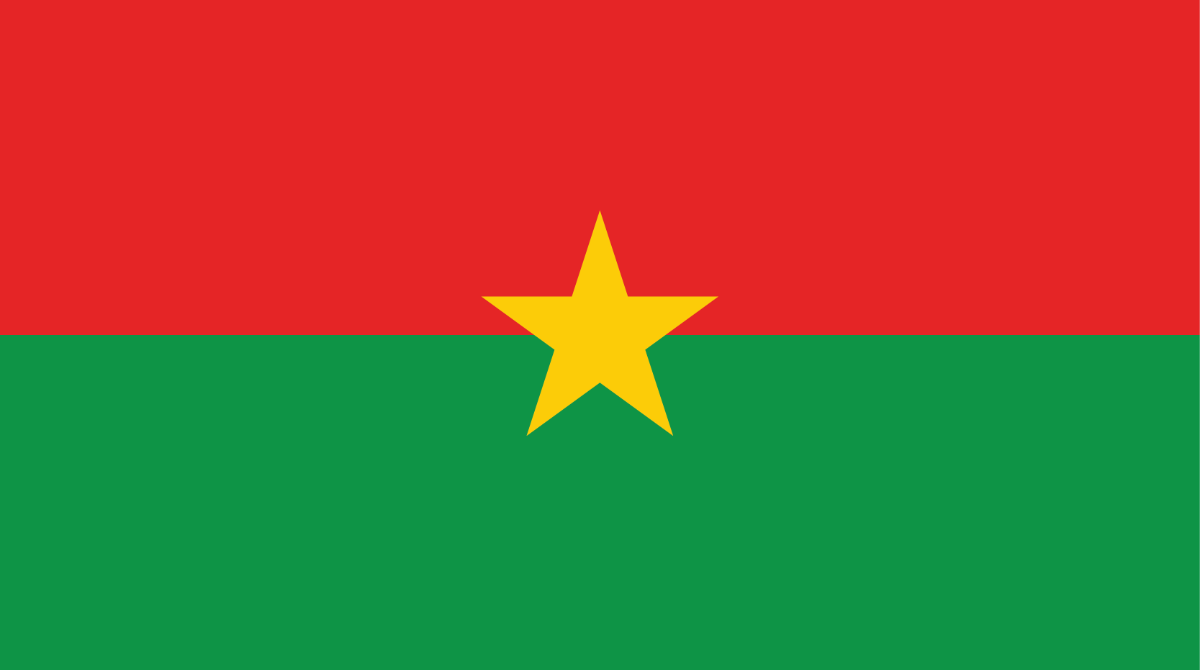At a glance
CDC works with partners in Burkina Faso to build sustainable public health capacity, strengthen laboratory systems and surveillance networks, deliver high-quality HIV and TB diagnostic, treatment, and prevention services, and respond swiftly to disease outbreaks at their source, preventing health threats from reaching the U.S.

Strategic focus
The U.S. Centers for Disease Control and Prevention (CDC) established a country office in Burkina Faso in 2016 with the launch of the Global Health Security Agenda (GHSA). This initiative was built on CDC’s longstanding collaboration with the Ministry of Health (MOH) and its capacity-building platforms. In 2021, this partnership expanded when the U.S. President’s Emergency Plan for AIDS Relief (PEPFAR) started providing services in Burkina Faso.
Burkina Faso is making significant progress in strengthening the HIV response. HIV prevalence declined from 1.2 percent in 2010 to 0.6 percent in 2023 in the adult population. Nearly 84 percent of people living with HIV know their status, 77 percent are on treatment, and 71 percent of those on treatment are virally suppressed. HIV is a leading cause of death in Burkina Faso, and challenges remain in the prevention of mother-to-child transmission, case finding, and achieving long-term viral load suppression. Tuberculosis (TB) incidence has declined from 55 cases per 100,000 people in 2012 to 43 cases per 100,000 people in 2023. TB diagnostics made progress, increasing from 55 percent to 69 percent of cases, but security concerns make it challenging to maintain the momentum of detection. The primary objective is to improve the quality of laboratory services to meet the needs of HIV and TB patients.
Read more about CDC's most recent key activities and accomplishments below.
Building public health capacity
- Coordinated and ensured quality HIV testing nationwide with the National Directorate of Laboratory, the National AIDS Council, and the National Program for TB. Systems supported include HIV testing services, prevention of mother-to-child HIV transmission, early infant diagnosis (EID), and TB diagnosis.
- Trained staff to meet international standards at six supported laboratories for viral load and EID and for TB at the National Reference Laboratory.
Strengthening laboratory systems and networks
- Provided technical expertise to regional and district health laboratories to ensure better access to HIV testing services. With CDC support, Burkina Faso continues to implement HIV quality improvement services in more than 41 HIV testing sites to ensure the accuracy of HIV testing.
- Expanded HIV viral load (VL) testing and EID for 17 testing sites. CDC continues to ensure that laboratory platforms are optimally used to support HIV prevention, care, and treatment services by collaborating with other donors and programs, such as UNICEF and the Global Fund. CDC supports the implementation of an integrated specimen transportation system nationwide.
- Enhanced data quality and use for decision-making by the MOH and local partners through the development and implementation of a national data quality improvement plan and the establishment of a laboratory information management system.
- Improved service by holding quarterly laboratory-clinic interface meetings to enhance VL and EID performance and targets.
Tuberculosis prevention and treatment
- Supported the National TB Reference Laboratory to meet international standards by training laboratory personnel, drafting standard operating procedures, and providing oversight of laboratory activities and proficiency testing monitoring.
By the numbers
HIV
Estimated HIV Prevalence (Ages 15-49)
0.6% (2023)
Estimated HIV Deaths (Age≥15)
Reported Number Receiving Antiretroviral Therapy (Age≥15)
TB
Estimated TB Incidence
43/100,000 (2023)
6.5% (2023)
TB Treatment Success Rate
82% (2022)
Resources
Support for CDC's global HIV and TB efforts.
Our success is built on the backbone of science and partnerships.